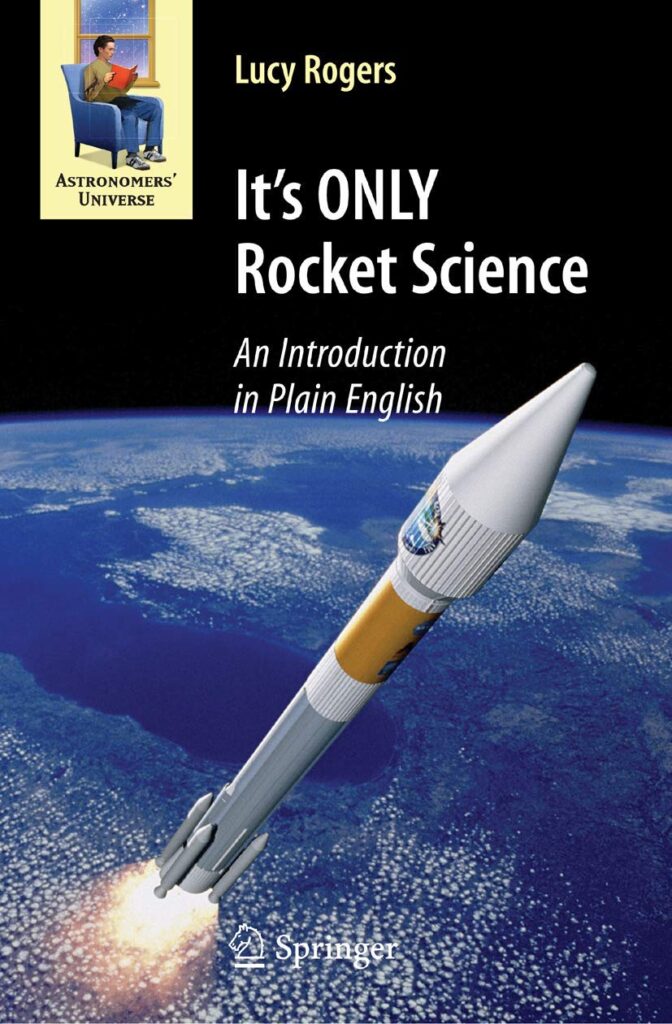2022, All The Missions! A Decisive Year For The Space Exploration
2022, all the missions! A decisive year for the space exploration 2021 was a great year for space exploration: NASA flew a helicopter to Mars for the first time, China launched a large space station, and Star Trek’s Captain Kirk (actor William Shatner) went where no 90-year-old had gone before. And that’s just to name the trivia, the ones that appeal most to a general audience… But the 12 months that are to follow will be perhaps even more exciting, with the departure of more missions, the debut of two super-powered rockets, and the beginning of the second space race to the Moon, after the unforgettable one of half a century ago. So here is the description – month by month – of the most important missions that will start this year. Always keeping in mind that the dates could undergo important variations! February The Axiom-1 mission: four tourists to the international space station Following the success of SpaceX’s Inspiration4 mission in 2021, which saw four private citizens orbit the Earth for a few days, space company Axiom Space has finalized a contract with SpaceX to launch four manned missions to the International Space Station. Falcon 9 rockets and SpaceX’s Crew Dragon spacecraft will be used for all launches. Axiom Mission 1 will launch on 28 February 2022 and send four people to the ISS for an eight-day stay: Michael López-Alegría, a professionally trained astronaut hired by Axiom Space, Eytan Stibbe from Israel, Larry Connor from the United States and Mark Pathy from Canada. It had been anticipated that Tom Cruise and Doug Liman would be passengers for a movie project, but it was later announced they will fly on a subsequent flight The mission, expected to start from Kennedy Space Center, will be flown aboard Crew Dragon Resilience. Following their time on the ISS, the spacecraft will undock and return to Earth via a splashdown in the Atlantic Ocean. This mission will be the first wholly commercially-operated crewed mission to the ISS, and one of the first dedicated orbital space tourism missions. Each of the seats reserved for tourists was announced to cost US$ 55 million. March Spaceship: first test in Earth orbit All attentions are focused on the first orbital launch of Spaceship, the SpaceX spacecraft. The reasons are many, since if on the one hand Spaceship can be used as a lander for the next landing on the Moon, on the other hand, it is an integral part of the Martian colonization program that Musk absolutely wants to complete, as well as a fundamental means to kick off an evolved form of space tourism. Together with the first stage Super Heavy, currently under development in the hangars of SpaceX, Spaceship will form a stack of 120 meters, able to overcome in height even the huge Saturn V of NASA. In recent days we have finally witnessed the first ignition of the 6 Raptor engines that will be used for the first orbital test, a fireworks display of great visual impact, but conducted once again on the ground. We still do not know the date of the launch, but one thing we know for sure, it will not happen in the first two months of 2022. To act as a further bottleneck on the developments is once again the Federal Aviation Administration that has postponed to February 28, 2022, the response on the environmental analysis, an essential step to obtain the launch license necessary to start the orbital test. It will be a very important test for Starship, and Musk has already taken into account a possible failure, but in any case, this will allow to collect data and work to improve the weaknesses of the project. As for the sequence of the first orbital test, we know that after the separation of the first Super Heavy stage, it will perform a boostback burn with splashdown at about 32 km from the coast of Texas, while Starship SN20 will climb to about 200 km high to perform an atmospheric re-entry over the Pacific Ocean and finally land at about 100 km northwest of Hawaii. CAPSTONE mission: the forerunner of the Gateway Lunar Station NASA wants to put a space station called Gateway in orbit around the moon. You already know this, right? It would serve as a stopping point for astronauts’ visits to the lunar surface. To be used most effectively, however, Gateway would have to orbit the moon in a very elliptical trajectory. In an orbit that is special for two main reasons. First, it is the one that allows orbiting the Moon with the least amount of fuel; and In addition, it will allow the station to be constantly in communication with the Earth. An exact date is not yet known, but the launch is expected to take place in the spring of 2022. It will also be the first interplanetary mission launched by Rocket Lab, a public American aerospace manufacturer, and small satellite launch service provider. The company was founded in New Zealand in 2006 by engineer Peter Beck and established headquarters in California in the United States in 2013. CAPSTONE, a microwave-oven-size satellite, will be used to study what it’s like for a spacecraft to operate in this orbit. The mission will be launched by Rocket Lab from its site in New Zealand. An Electron rocket, developed by Rocket Lab itself, will release CAPSTONE as soon as it leaves Earth orbit, and then continue moving until it reaches the Moon. It will perform a flyby with our lunar satellite and then continue to interplanetary space. Its main mission will be to test long stays in space, in view of more distant missions planned by Rocket Lab. The little satellite, instead, will take about three months to reach its destination around the Moon, which it will then orbit for another six months. ARTEMIS -1: the first step towards the reconquest of the Moon March will also see the launch of the SLS (Space Launch System) rocket, which will make its space debut by taking an unmanned Orion capsule on a tour around the Moon. The SLS, a candidate to replace the Saturn V, aspires to become NASA’s most powerful launcher. The mission will also test the Orion spacecraft, prepared to carry a crew: the launch anticipates, in fact, the Artemis-2, which will put astronauts in lunar orbit, and the Artemis-3, which in 2025 will bring to the Moon a mixed crew to build the first lunar base. Artemis 1 is the first mission of the Artemis Program, originally scheduled for November 2021. The latest postponements were decided due to a malfunctioning first-stage engine. NASA appears to have fixed the problem, but this still resulted in weeks of delays. Two launch windows are currently available: the first from March 12 through March 27, while the second is open from April 8 through April 23. Artemis 1 will be the test mission for both the SLS launcher and the Orion capsule, two cornerstones of the entire future of the Artemis Program. Further delays could therefore occur. There will be no astronauts aboard Artemis 1, and no lunar landing is planned. The Orion capsule will only perform one orbit of our satellite before returning to Earth. Also on board, the second stage of the SLS are 10 CubeSats, which represent the secondary cargo of the mission. They were originally planned to be 13, but three of them did not arrive in time at Kennedy Space Center. “Hey, guys, just a moment before we continue… BE sure to join the Insane Curiosity Channel… Click on the bell, you will help us to make products of ever-higher quality!” DREAM CHASER, the mini-shuttle finally goes into orbit In March should leave for Earth orbit also the Dream Chaser, built by Sierra Space with great ambitions. Dream Chaser is a mini Space Shuttle nine meters long designed to transport astronauts, supplies, and scientific equipment to the Space Station. Just like its big brother, it will be launched from a rocket and return to Earth by landing like an airplane. After an endless series of problems and delays, the first unmanned test launches are scheduled for March, June, August, and November 2022. Dream Chaser can accommodate up to seven astronauts who, if all goes well, will begin taking their seats on the shuttle between 2023 and 2024. June JUICE Mission starts, destination Jupiter’s moons JUICE, also known as the JUpiter ICy moons Explorer, is a European Space Agency mission intended to explore Jupiter and three of its icy moons: Europa, Callisto, and Ganymede. A single orbital spacecraft, with no lander, will be the first to orbit Ganymede, and one of a handful of spacecraft to visit the Jupiter system since the 1970s. JUICE is targeted to launch in June 2022 aboard an Ariane 5 spacecraft. It will take more than 7.5 years to get to Jupiter, using gravity assists from Venus and Earth to speed the spacecraft up and get it into the outer solar system. The spacecraft is expected to be inserted in Jupiter’s orbit in January 2030, starting a 2.5-year observation session of Jupiter’s moons, as well as the planet’s atmosphere and magnetosphere. July Russia returns to the Moon! Russia could launch the Luna-25 mission to the moon’s south pole. The Soviet Union’s final moon mission, Luna 24, ended in 1976. Now the Russian space program wants to return to the lunar surface. Luna 25, a stationary lander, will study the regolith of the moon’s south pole as well as plasma and dust in the thin lunar atmosphere. The launch is currently scheduled to occur in July 2022 on a Soyuz rocket with Fregat upper stage, from Vostochny Cosmodrome. August Mission to the asteroid Psyche With the Psyche mission, starting in August 2022, the U.S. space agency wants a close-up of one of the most intriguing objects and perhaps among the most valuable we know, the asteroid 16 Psyche. The launcher will be a SpaceX Falcon Heavy and the mission will be completely robotic and low cost, aimed at discovering if that object is really composed of iron and nickel (and if it is worth opening a mine there) and to understand how it was formed. 16 Psyche is in fact the heaviest known M-type asteroid. Data show to have a diameter of 222 km and scientists think that it could be the exposed core of an early planet that could have been as large as Mars and lost its surface in a series of violent collisions. The Psyche spacecraft is designed with solar electric propulsion and the launch is planned for 01 August 2022. Psyche will be launched on a trajectory that will perform a gravity assist maneuver past Mars on 23 May 2023, toward the asteroid belt. Psyche will encounter the asteroid and enter orbit on 31 January 2026. September Europe and Russia together on Mars After many postponements, the European Space Agency and the Russian one Roscosmos finally start the joint mission ExoMars to the Red Planet So, the hunt for alien life will take a step further this year with the launch of a robot rover which will land on the Oxia Planum, an 80 km wide clay-bearing plain in the planet’s northern hemisphere. The rover – named after Rosalind Franklin, the British chemist, and DNA pioneer – will be fitted with a drill capable of probing several feet below the Martian surface, where it is hoped primitive lifeforms may survive or at least the remnants of extinct organisms. A 12-day launch window will open on Sept. 20, 2022, and the rover is expected to be able to land on Mars on June 10, 2023. First test launch of Blue Origin’s NEW GLENN Jeff Bezos’ space company is carving out an important niche in space tourism for the super-rich and has several such flights planned for 2022, but its current rocket, the New Shepard, is only suborbital. That is, it is not able to bring men and materials around the Earth. So here is the New Glenn, a reusable launcher that will give Blue Origin the same “political” weight as SpaceX and will give the green light to Amazon’s Kuiper project for the launch of over 3000 satellites. Named New Glenn after NASA Mercury astronaut John Glenn, the rocket can send up to 14 tons to geostationary orbit and 50 tons to low Earth orbit. It is expected to be launched in September of this year. October India tries it again: the Chandrayaan-3 mission to the moon The Indian Space Research Organisation is planning to launch Chandrayaan-3 by the third quarter of 2022. India’s third endeavor to the Moon, the mission will constitute a lander and rover as the scientists will be using the Chandrayaan-2 orbiter that was successfully installed in the lunar orbit in the Chandrayaan-2 mission. Chandrayaan-2 was launched on July 22, 2019, and on September 6, the lander that carried a 27kg rover with instruments to analyze the lunar soil, crashed when it deviated from its intended trajectory due to a software glitch.













